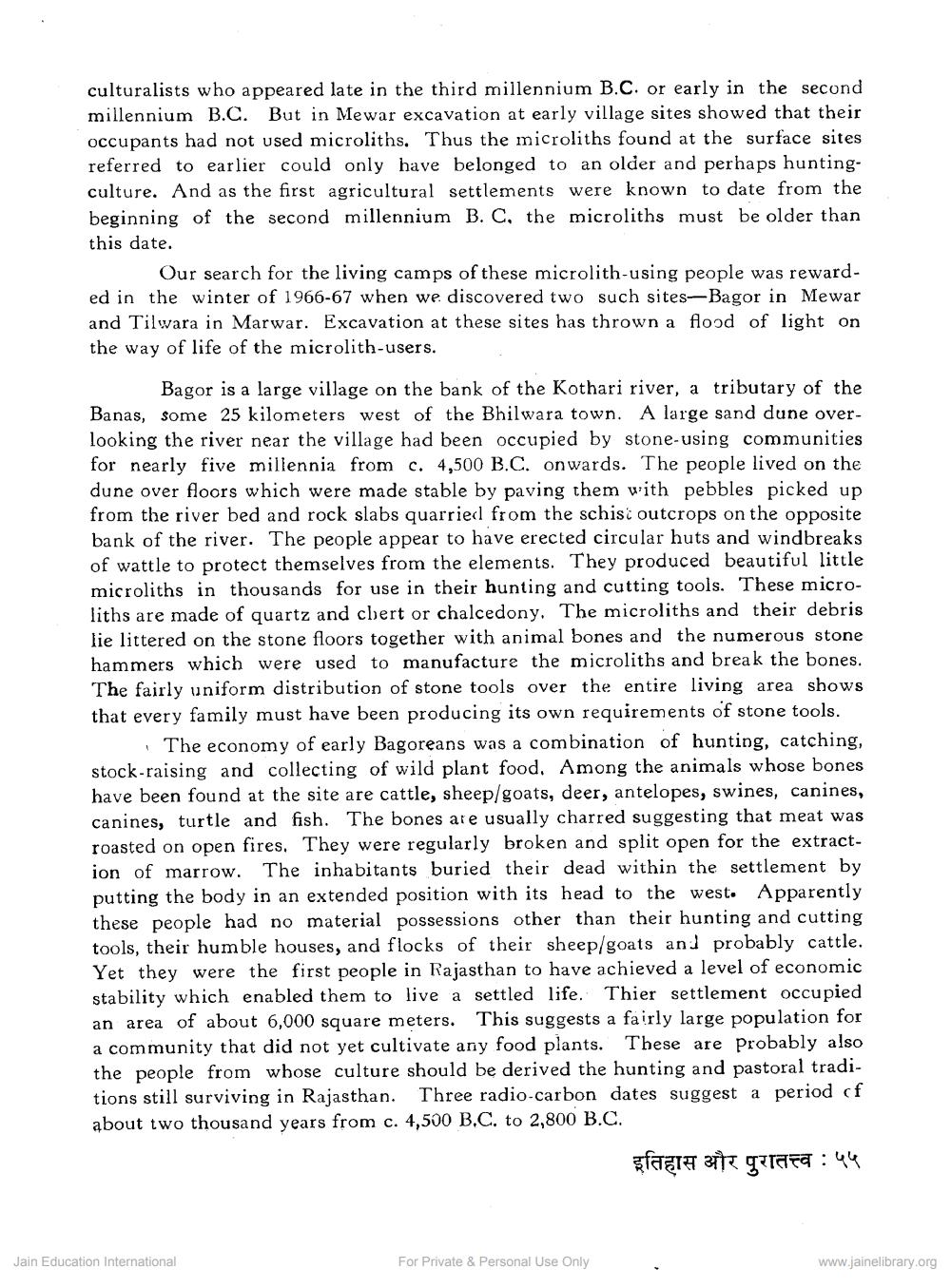Book Title: Prehistoric Background of Rajasthan Culture Author(s): V N Misra Publisher: Z_Agarchand_Nahta_Abhinandan_Granth_Part_2_012043.pdf View full book textPage 7
________________ culturalists who appeared late in the third millennium B.C. or early in the second millennium B.C. But in Mewar excavation at early village sites showed that their occupants had not used microliths. Thus the microliths found at the surface sites referred to earlier could only have belonged to an older and perhaps huntingculture. And as the first agricultural settlements were known to date from the beginning of the second millennium B. C, the microliths must be older than this date. Our search for the living camps of these microlith-using people was rewarded in the winter of 1966-67 when we discovered two such sites-Bagor in Mewar and Tilwara in Marwar. Excavation at these sites has thrown a flood of light on the way of life of the microlith-users. Bagor is a large village on the bank of the Kothari river, a tributary of the Banas, some 25 kilometers west of the Bhilwara town. A large sand dune overlooking the river near the village had been occupied by stone-using communities for nearly five millennia from c. 4,500 B.C. onwards. The people lived on the dune over floors which were made stable by paving them with pebbles picked up from the river bed and rock slabs quarried from the schist outcrops on the opposite bank of the river. The people appear to have erected circular huts and windbreaks of wattle to protect themselves from the elements. They produced beautiful little microliths in thousands for use in their hunting and cutting tools. These microliths are made of quartz and cbert or chalcedony. The microliths and their debris lie littered on the stone floors together with animal bones and the numerous stone hammers which were used to manufacture the microliths and break the bones. The fairly uniform distribution of stone tools over the entire living area shows that every family must have been producing its own requirements of stone tools. The economy of early Bagoreans was a combination of hunting, catching, stock-raising and collecting of wild plant food. Among the animals whose bones have been found at the site are cattle, sheep/goats, deer, antelopes, swines, canines, canines, turtle and fish. The bones are usually charred suggesting that meat was roasted on open fires. They were regularly broken and split open for the extraction of marrow. The inhabitants buried their dead within the settlement by putting the body in an extended position with its head to the west. Apparently these people had no material possessions other than their hunting and cutting tools, their humble houses, and flocks of their sheep/goats and probably cattle. Yet they were the first people in Rajasthan to have achieved a level of economic stability which enabled them to live a settled life. Thier settlement occupied an area of about 6,000 square meters. This suggests a fairly large population for a community that did not yet cultivate any food plants. These are probably also the people from whose culture should be derived the hunting and pastoral traditions still surviving in Rajasthan. Three radio-carbon dates suggest a period of about two thousand years from c. 4,500 B.C. to 2,800 B.C. इतिहास और पुरातत्त्व : ५५ Jain Education International For Private & Personal Use Only www.jainelibrary.orgPage Navigation
1 ... 5 6 7 8 9 10 11 12 13 14 15 16 17 18 19
